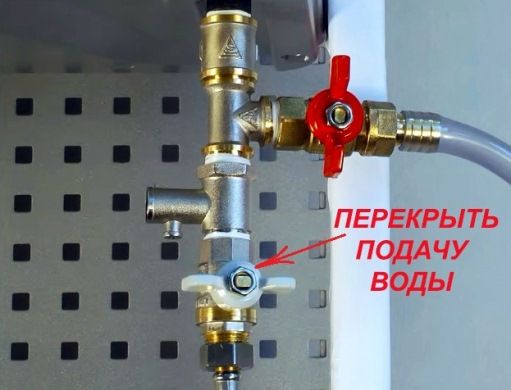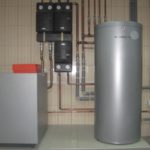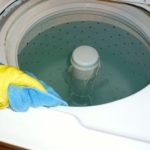How to drain water from a water heater
 The modern market for household appliances is very diverse. Manufacturers regularly offer their consumers new, more improved models. These include water heaters. Correct operation and compliance with all instructions specified in the instructions will help extend the life of the equipment.
The modern market for household appliances is very diverse. Manufacturers regularly offer their consumers new, more improved models. These include water heaters. Correct operation and compliance with all instructions specified in the instructions will help extend the life of the equipment.
The content of the article
Design Features
Water heaters, or boilers, have taken a strong position in almost every apartment or private house. They provide housing with a regular supply of hot water, helping not to depend on central utility systems. A seemingly simple device actually has a complex design and performs quite important functions. It automatically maintains the temperature of the water in it.


The modern market of similar household appliances is presented in a wide range. Each owner will be able to find a device that suits the design, size and pricing policy. Despite the external differences, all water heaters are designed according to the same principle.
Hidden inside the case is a heating element - a tubular electric heater that is directly responsible for heating.It and other parts (safety valve, magnesium anode) are protected by a thermal insulation layer that runs between the outer and inner walls of the housing.
At the bottom of the structure there is a thermostat, which is responsible for the ability to regulate the temperature. On the outer walls there are special fastenings for possible installation of the water heater on a wall or other surface.
Several simple and familiar components are responsible for performing important functions and making the water heater easy to use.
Possible reasons for water drainage
From time to time it may be necessary to drain the water to empty the boiler tank. Many people are interested in whether it is necessary to drain the water from the water heater for the winter. Let's consider cases when you need to drain the water.
Manufacturers strongly recommend following the recommendations and not emptying the water heater unless absolutely necessary.
Possible situations:
- The equipment is located in a place that is not heated for a long time, for example, a summer house. Stagnant water in the storage tank and pipes freezes. This may damage the internal structure or rupture the tank;
- Routine cleaning of the inside of the tank. Hard water promotes the appearance of rusty deposits and bacteria. Periodic cleaning is necessary in such situations;
- Replacing the old magnesium anode with a new one. The anode is engaged in purifying the incoming water from harmful impurities, accumulating them in itself. It is recommended to replace a new device annually;
- The appearance of leaks and leaks when using the boiler. If the walls are damaged, operation of the device must be stopped;
- The appearance of an unpleasant odor indicates the need for urgent cleaning.It may appear due to stagnant water in the tank.
It is not recommended to carry out liquid drainage procedures unless absolutely necessary. The ideal option would be to empty the storage tank once a year.
Available options
Experts identify several methods suitable for draining water from a water heater. A competent approach and compliance with safety precautions will help carry out the draining process quickly and without injury or burns.
Reference. Before carrying out the procedure for draining the liquid, you must read the instructions for a more detailed understanding of the design of the water heater.
Several ways to drain water from a water heater:
- The most popular is to drain the liquid through a safety valve. The body of the water heater is equipped with a special valve designed specifically for emergency emptying of the tank. For greater convenience, you can connect a drain tube to the valve spout, directed into the bathtub or sink.
- Using a valve, it is necessary to shut off the flow of water from the water supply. After the liquid remaining in the housing has cooled, the hot and cold water supply tubes are carefully removed. Once the tubes are removed, you can begin draining.
- The tank can be emptied through a special hole designed for cold water. This method is more complicated. To carry out the procedure, it is necessary to temporarily prevent the supply of water to the room. Place a suitable container under the hole to collect water. Using a wrench, carefully unscrew the nuts and then remove the relief valve. For faster emptying, you can open the hot water tap. Air entering the housing will cause faster leakage.


Following all the steps during operation will help empty the water heater tank.
What to pay attention to
Any of the above processes does not guarantee complete drainage of water. To thoroughly empty the boiler, it is necessary to disassemble it. To do this, carefully unscrew the cover on the bottom surface and carry out the process of disconnecting the wires.
When disconnecting the wiring, you will need to remember all the details of the initial connection to continue operation. The flange serves as a support for the tubular electric heater; it must be unscrewed counterclockwise. Slightly loosening the nut will allow the liquid remaining at the bottom to drain.
After complete emptying, you can completely unscrew the flange. When removing the heating element, difficulties may arise due to scale and rusty deposits on its surface. To do this, you can gently rock the water heater, gradually pulling the heating element up.
Safety precautions
During the repair work, safety regulations must be observed. This will help avoid potentially dangerous injuries and burns, and also extend the life of the water heater.
First of all, experts do not recommend draining the water yourself, provided that the device is still under warranty. Even minor damage will void the warranty. In this case, it is better to turn to professionals for the service.
Before carrying out repair work, the device must be disconnected from the power supply network, and the liquid in the container must be allowed to cool to room temperature. This will prevent the possibility of burns.
It is not recommended to drain water unless absolutely necessary.When empty, the internal casing of the boiler is more susceptible to corrosion. The ideal option would be to clean the internal walls and replace the necessary parts once a year.
Conclusion
Electric water heaters have become a constant companion in any apartment. Timely care, following simple recommendations and safety precautions will help you carry out repair processes yourself and extend the life of the device.
And how is the author of the article going to drain water from a hot tap? Complete lack of knowledge of water heater design! Water can be drained ONLY FROM THE COLD LINE!!!
In the first picture, the same tube is both hot and cold:((






Water is drained FROM the heater, not FROM it!